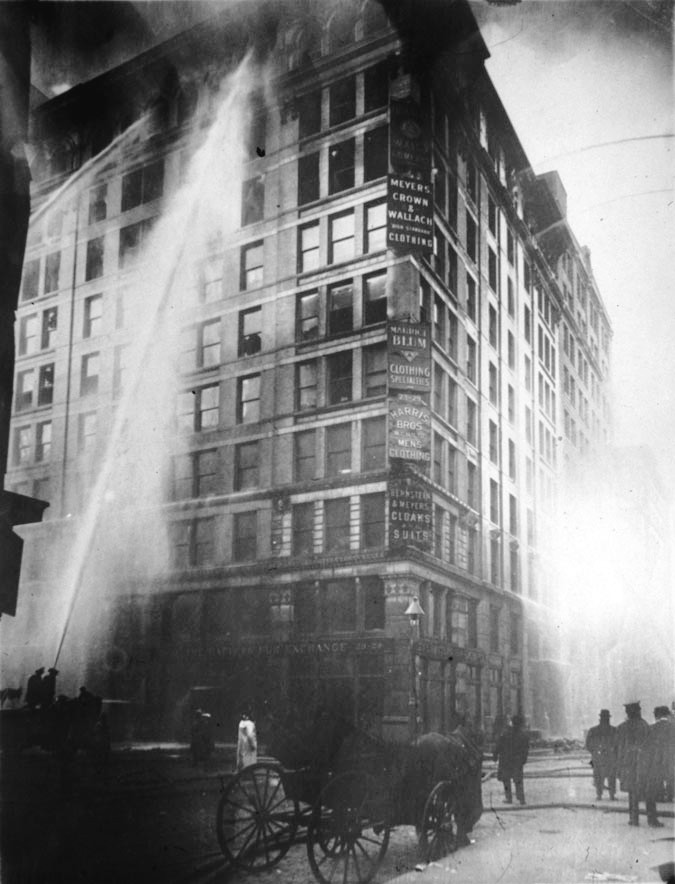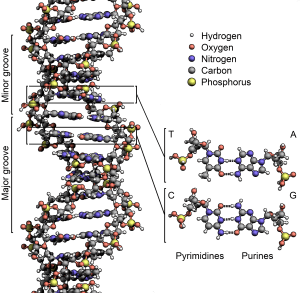It was March 25, 1911, in New York City. It was a Saturday afternoon just like any other at the Triangle Shirtwaist factory, where young immigrant women sat in front of sewing machines, day in and day out, sewing. But on that day a fire broke out, causing the deaths of 146 garment workers. Among those who died in the flames and smoke were 123 women and 23 men.1 Many even jumped or fell to their deaths out the windows, making this event a man-made disaster and one of the deadliest industrial disasters of all time.

The factory was located in the Asch Building at Washington Place in Greenwich Village, one of the wealthiest neighborhoods in the city. The factory occupied the eighth, ninth, and tenth floors of the ten-story building. Max Blanck and Issac Harris were the owners of the factory, and their company was known as the largest firm in the business at the time. They styled women’s blouses known as “Shirtwaists,” which were paired with tailored skirts. This attire had become the standard in fashion for women in the early twentieth century. They were also known to resemble men’s shirts. When it came to their workers, they had hired operators who then contracted out for factory workers. The company itself only dealt with the contractors, and there was no fixed rate of pay for the workers.2 At the time, the factory employed about five-hundred employees, mostly young immigrant women who were of Italian or Jewish descent. These women worked up to eleven-hour shifts on weekdays, and twelve-hour shifts on Saturdays, and they earned between $7-$12 dollars for a 52-hour week. Many of these women were the breadwinners of their household, and their income was sometimes not sufficient to cover their needs.
Towards the end of the workday on that Saturday evening in 1911, a fire broke out around 4:00 pm. The fire started in a scrap bin under one of the cutter’s tables on the eighth floor from what is believed to have come from a cigarette. A manager tried to put the fire out with a hose but the hoses valve was rusted shut, and rotten away. The fire spread quickly and the workers panicked. There was one fire escape that quickly collapsed, and four elevators, which out of the four only one was working. The elevator held twelve people at a time, and it managed to make four rescue trips before it broke down.3 With no other alternatives available, people began throwing themselves out the windows, and some were even crushed to death trying to get out. Workers tried to take the stairs, but the exit doors only opened inward and were kept locked by factory management to prevent theft by the workers, as the managers would check their workers belongings every day before they left for the day.

Celia Saltz Pollack, a survivor of the 1911 Triangle Shirtwaist Fire said,
I remember on that day there was a lot of singing and happiness in the shop because it was the end of the week and we got paid. We were soon all going to go home. When the fire started I was sitting at my machine. I looked up and saw the fire near the cutting tables but I did not think it was so terrible. What was terrible was that the fire spread in a split second.
By the time the firefighters arrived, they came to the realization that their ladders could only extend up to the sixth or seventh floors. With no other option, sixty-two workers jumped and fell to their deaths, while the remaining died from the smoke and flames within the building.4

This fire not only pushed issues of unsafe factories and immigrant exploitation into the public consciousness, but for the first time the fire allowed for attention to be brought to deplorable conditions of New York factories.5 Women obtained well deserved attention onto current work conditions and safety measures in the workplace. Although the Triangle Shirtwaist Factory fire brought a feeling of resentment and heartbreak to many, this event and its victims will always be remembered.
- Ric Burns, “Triangle Shirtwaist Fire,” New York Times (1923-Current File), Nov 24, 1999. ↵
- Jonathan Fink, “Conflagration and Wage: The Triangle Shirtwaist Factory Fire, 1911,” TriQuarterly, no, (2009): 135-136. ↵
- Gale Encyclopedia of U.S. Economic History, s.v. “Triangle Shirtwaist Fire,” by Thomas Carson and Mary Bonk. ↵
- Mia Lynn Mercurio, Régine Randall, “Tributes Beyond Words: Art Educators’ Use of Textiles to Memorialize the Triangle Shirtwaist Factory Fire.” Journal for Learning through the Arts no. 1 (2016): 4-5. ↵
- Albert Marrin, Flesh and blood so cheap: The Triangle fire and its legacy (New York: Alfred A. Knopf, 2011), 23-25. ↵




135 comments
Erika Longoria
This article did a great job at explaining such a tragic event that occurred. It gave insight to the readers how factories really were. Managers did not put safety first and only cared about getting the work done with having to spend the least money as possible. Although it is extremely sad, accidents like this formed regulations and safety protocols into what they are today.
Jacob Galan
It’s sad to think that all these rules and regulations came after all those people died in the Triangle Shirtwaist Factory. I knew a little about this event but one thing that I did not know is that some people jump to their death after knowing that there was no escape. One question that I have is did the people who lock the exit doors so workers wouldn’t steal ever get tried or arrested for what they did since if they left those doors unlocked many people would have survived.
Lily Schow
This article is super interesting. It is so sad that reform for factory workers had to come from such tragedy and loss of life. The writer did a great job explaining this tragedy without diminishing the loss of life. These immigrant women were the breadwinners for their families and brought home money for their families, and when they died their families lost their main source of income. These women lost their lives because their managers locked them in the building.
Mckenzie Gritton
Such a tragic event that happened out of negligence. To think that there were so many things that could’ve helped to prevent so many lost lives-being able to get the doors unlocked, If there was inspections on their fire prevention equipment. Choosing death by fire or death by fall is so sad. The fact that this event is what happened to bring attention to the unsafe working conditions, and ways to prevent this from happening again is awful.
Serenity Kamenski
Surprisingly, in high school one of my teachers went heavily over this tragedy, but still reading about it had the same effect it did the first time I learned about it years ago. The picture you provided of all the bodies brings chills, and truly represents how heartbreaking this event was in the first place. Although it did lead to addressing the issues of unsafe measures in the factory, it still seems like something that could have been prevented beforehand. Great article.
Phylisha Liscano
A very great article Josselyn. It is very sad that many lost their lives. It is even more heartbreaking knowing that there were many ways to escape but not one single way pulled through for everyone. Those stairs would have saved many lives if the doors were unlocked. Very heartbreaking story. It is great to know that after this horrible incident it brought attention to the working conditions in factories. Overall, excellent article and great topic.
Maria Luevano
This is such a sad and tragic incident, but it would allow for the process of reform to take place and better the work environment. This incident was a lesson to America’s manufacturers and revealed just how bad the working conditions were for laborers. This article did a great job explaining the aftermath of the fire and the events happening during the fire. I especially loved that you were able to include a quote from a survivor, great job!
Cecilia Schneider
This is such a tragic event that took place in history and is surprisingly not brought up within at least high school history! The article points to the major issues concerning this fire such as women’s work conditions and terms, the dangers of the factories, the management’s carelessness for their employees, and much more. Many times when I was reading this article I came to realize why there are expectations in the workplace. Not only to observe the safety hazards such as functioning elevators, and firehose, but also the treatment or in this case the exploitation of employees. I can only imagine the terror these people felt being locked inside with no one able to reach them.
Richard Moreno
I had never heard of this event in American history before. This is truly a horrible tragedy. The fire could have been prevented, as well as measures to evacuate could have been in place. Sadly, this was a time before the regulations and safety precautions we have now. Its always terrible to hear about needless loss of innocent life. Thankfully, with articles like these, the victims are able to be remembered. Tragic events such as these should not be forgotten.
Aaron Sandoval
This article did a good job of telling the horrific events that occurred, and although this event was horrific and should not have occurred, it helped bring to light many of the issues faced during this period of American history. The concept of workers’ rights was unknown and many failed to care about the lives of those they employed, this accident and those that lost their lives helped bring about a change towards labor rights, even though it would still be a battle change would come.